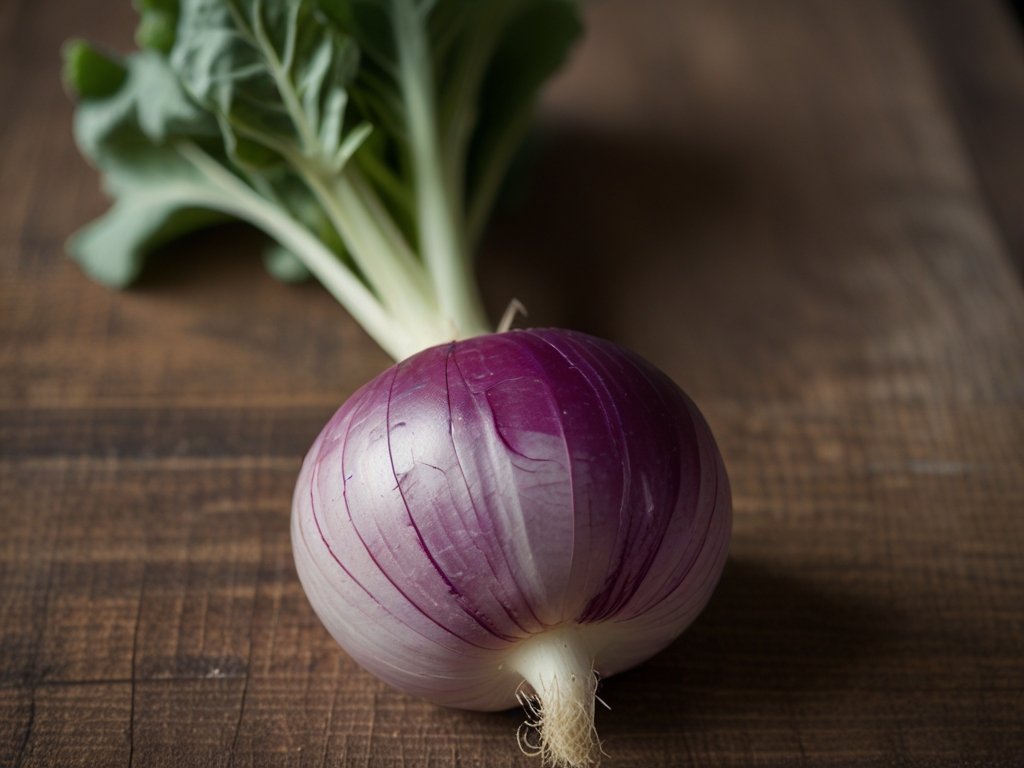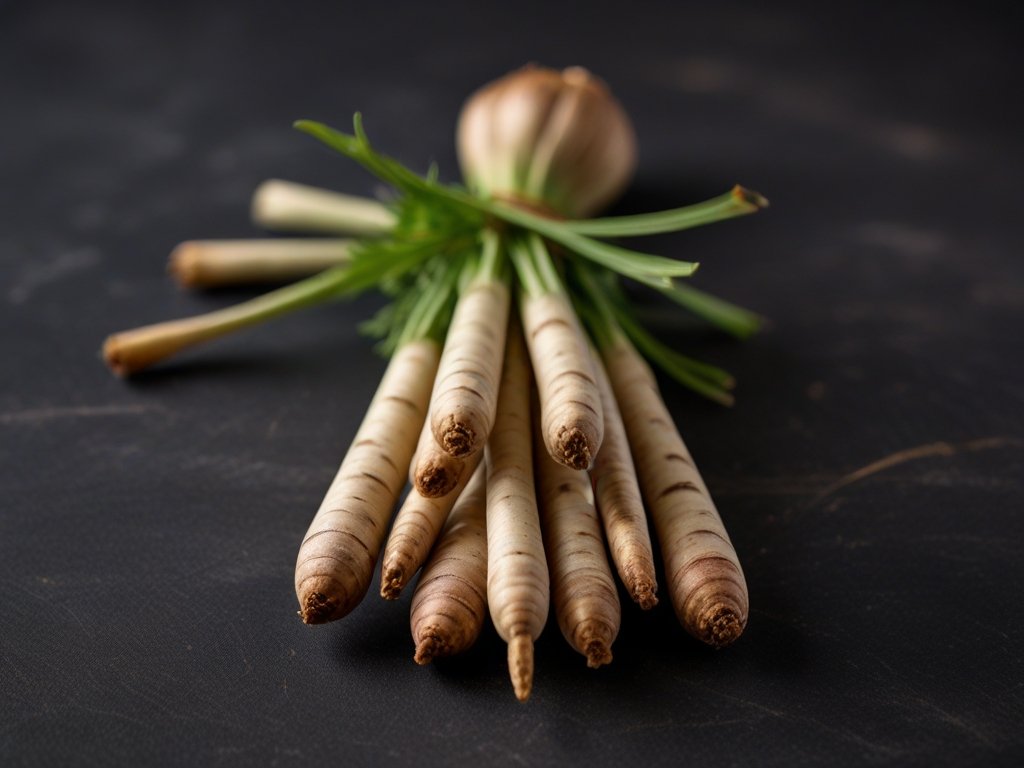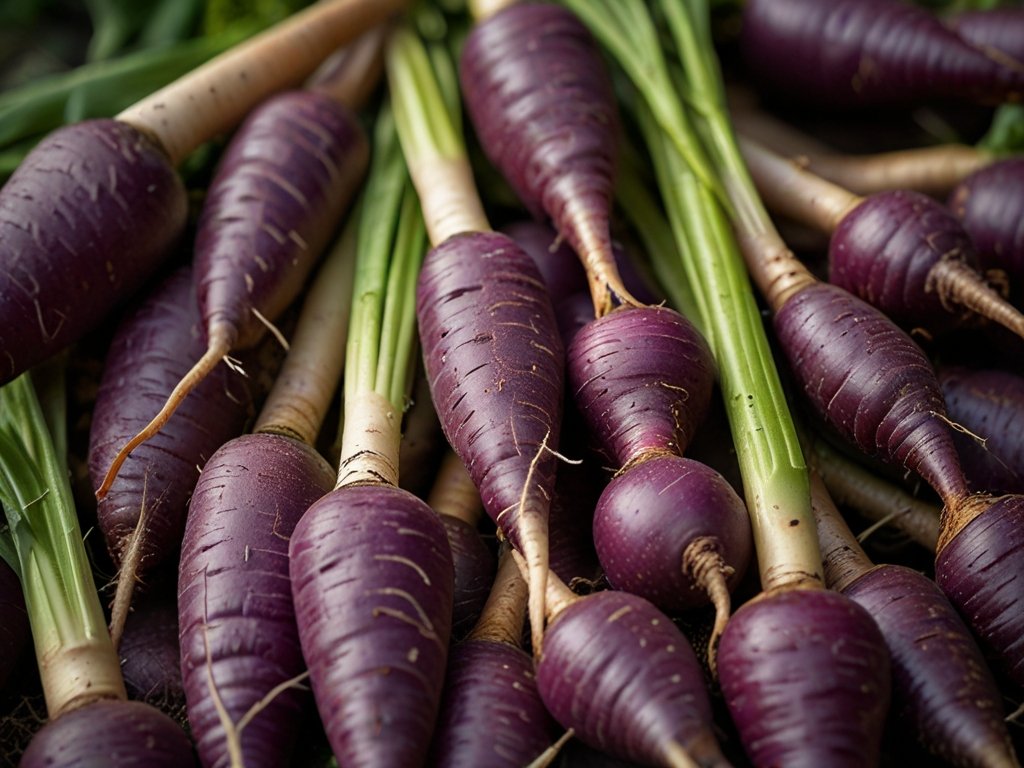If you are looking for a way to do something out of the ordinary in your garden, why not experiment with some unusual vegetables that can thrive in the UK climate. You might be surprised by how easy it is to grow exotic crops that will add variety and flavour to your dishes. Today we will introduce you to six unusual vegetables that anyone can grow in their garden, regardless of their experience or space. Number one on our list is the Purple Carrot.
Purple Carrot.
When most of us think of carrots we think of the standard orange variety that is eaten in everything from salads to Sunday roasts but in fact they come in a variety of colours including purple. The familiar orange one comes from a group that contain lots of beta carotene which gives them their colour whereas the purple ones are a type that in addition to beta carotene also contain high levels of water-soluble compounds called anthocyanins.
Purple carrots contain the same nutrients as orange ones plus the anthocyanins which have strong anti-inflammatory powers and may also help protect against some diseases. Eating them can add variety and play a part of a healthy diet.
Growing purple carrots in your garden isn’t that difficult to do. Just follow a few easy steps.
- Carrots of all types like full sun so select a sunny spot to plant the seeds in.
- They are well suited by a well-drained and fertile soil and can do well in containers.
- Sow the seeds from March onwards depending on the variety.
- Sow the seeds thinly less than 1cm deep in rows that are between 20cm and 30cm apart.
- Keep the area weeded and watered regularly but don’t over water.
- They usually take at least 10 weeks before they can be harvested. You can gently remove the soil to reveal the carrot top to gain an idea of how large they have become.
- There is no rush to harvest purple carrots so you can harvest them when you want to eat them.
You can eat purple carrots raw or cooked, but they may lose a lot of their colour if boiled which can be disappointing when you have chosen them specifically for their bright appearance. You can also roast, steam or juice them in a blender. Which ever way you choose they will be a tasty and healthy addition to your meal.
Next on our list of unusual vegetables is Oca.
Oca.
Oca is also known as New Zealand yam. It is a tuberous plant that produces colourful and knobbly roots that taste like potatoes with a hint of lemon. You can grow a variety of colours including red, yellow and orange. It is a nutritious vegetable that contains plenty of Vitamin C as well as Iron and calcium.
Growing Oca is very similar to growing potatoes.
- Compost the ground before planting.
- Test your soil to check its ph. It will grow in most soils but doesn’t like a very alkaline one.
- Depending on your area you may wish to start your oca off indoors and transplant later.
- You can plant oca outside in late April once the frosts have finished in a row 30cm apart.
- You should water them during dry weather especially from late Summer when the tubers start to grow.
- You can earth up as you would potatoes. This may increase the yield, but opinion is divided as to how beneficial it is.
- The foliage will not survive a frost and will die back around October but given that the tubers main growth comes late on in Autumn don’t rush to harvest. However, you should make sure they are dug up before any really bad weather freezes the ground.
Once harvested you can store oca in a cool dark place for several months. Eat them in similar ways to potatoes. They can be boiled or roasted or even eaten raw. Should you choose to eat them raw they will be sweeter if exposed to the sun for a few days prior to consuming them.
Its worth adding that the entire plant is edible and you could eat the leaves or the stem. Most commonly oca is grown for the tubers though.
Third on our list of unusual vegetables is kohlrabi.
Kohlrabi.
Kohlrabi isn’t a name that many people are familiar with probably because it isn’t commonly sold in British supermarkets. Also known as the German turnip or turnip cabbage it is actually a member of the Brassica family that includes cabbages, broccoli and kale. It is a good source of Vitamin C and contains nutrients such as calcium and potassium.
To grow kohlrabi, you should do the following-
- Ideally sow in a spot that has full sun although it copes fine in partial shade.
- Compost the planting area before sowing.
- Ensure the soil is not too acidic. A ph. more than 5 is fine.
- Sow thinly in rows from spring onwards.
- Keep them well atered and the area weeded.
- Protect them from slugs and other pests.
- Harvest them before they get too large (no more than three inches)
You can eat kohlrabi raw, or it can be boiled, roasted or steamed. Eat it in salads or in meals where you would eat other brassica vegetables.
Number 4 on our list is salsify.

Salsify.
This vegetable has a long and slender root that resembles a parsnip and has a delicate and slightly sweet flavour that has been compared to both oysters and asparagus. It is also known as the oyster plant so perhaps that’s the prevailing view, but you can always grow some and decide for yourself.
Salsify contains various nutrients notably, vitamin B2, vitamin B6 and vitamin C as well as some potassium and manganese.
If you wish to try growing salsify this is how best to do it.
- It will do best when planted in a location that gets at least 6 hours sun in midsummer.
- Salsify likes a decent fertilized, stone free loose soil where the roots can grow to their full size.
- Sow seeds in a row at a depth of around 1cm.
- Protect the young seedlings from slugs and snails.
- Regularly weed the surrounding area.
- Water the seedlings often when they first appear but once established, they only need water in dry spells.
- Salsify should be ready to harvest by early Autumn although there is no rush to harvest it and like other root vegetables frost may help sweeten the flavour.
- Once a frost is possible protect the surface with a fleece cover.
- Harvest them carefully by digging round roots at a depth of up to 30cm. Salsify roots snap off easily and if they are damaged, they won’t last so long in storage.
Salsify can be eaten raw but older roots are usually best when cooked. They can be steamed, boiled or roasted and can be added into stews or soups.
Next on our list is cucamelon.

Cucamelon.
Cucamelon which is also known as the Mexican miniature watermelon, Mexican sour cucumber or the Mexican sour gherkin is a plant that is grown for its olive shaped fruit. It is a fast-growing plant that can reach a height of 3m. They are a very healthy and nutritious food that even features in some lists of “superfoods”. It contains Vitamins C, E and K as well as beta carotene and potassium. Cucamelons are not hard to grow and if you would like to try you should do the following-
- Sow the seeds indoors and only transplant outside once the chance of frost has gone.
- Once outside make sure they are in a sunny spot as they thrive in full sun.
- They need a well composted fertile well drained soil.
- You can transplant them directly into the soil or use a container. If you use a container, make sure it is at least 30cm deep.
- As the plants grow make sure you support them with a trellis.
- Water them regularly to keep the soil moist.
- Feed them often with a suitable fertiliser.
- Remove any dead leaves to reduce the risk of disease spreading.
- The fruits will start to appear from July and can be harvested once they reach the size of a grape.
You can eat cucamelon raw just like grapes or add them to salads. You can also pickle them. Once harvested they don’t last more than a few days so its best to eat them soon after picking.
Last on today’s list are chinese artichokes

Chinese Artichokes.
Chinese Artichokes which are also known as crosne are part of a family of plants that originated in China. It produces edible tubers that grow to 7 or 8 cm in length and 1cm wide. They are a healthy food that have been used to treat colds and pneumonia and contain many important minerals and vitamins including vitamin K, folate, calcium, manganese and magnesium. They are also a good source of fibre.
Should you wish to grow Chinese Artichokes you should follow these steps –
- They will do best if you plant in a spot that gets full sun.
- A fertile, moist but well drained soil is ideal.
- Improve your soil by adding organic matter before planting.
- Plant them outside 6cm deep and around 25cm apart in Spring.
- You may plant them inside in pots and transplant them once they are established. This has the advantage of making them less vulnerable to damage from slugs or snails.
- Water them well in dry spells.
- They should be ready to harvest from October onwards.
- They store best by leaving them in the ground so its sensible to harvest as you want to consume them.
Chinese Artichokes can be eaten raw or cooked. They can also be pickled. They have a sweety nutty flavour and make a good addition to a salad or made part of a stir fry.
These six unusual vegetables are not only delicious and nutritious, but also fun to grow and experiment with in the kitchen. They will add variety to your meals adding new flavours that can spice up your normal dishes and salads. Hopefully you will have a lot of fun growing them and even more eating them. You might even find a new favourite! Happy Gardening.
